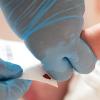Non-invasive testing has come a long way over recent decades. Here we look at a pioneering colon capsule endoscopy project that is underway and cast an eye over the history of this growing field.
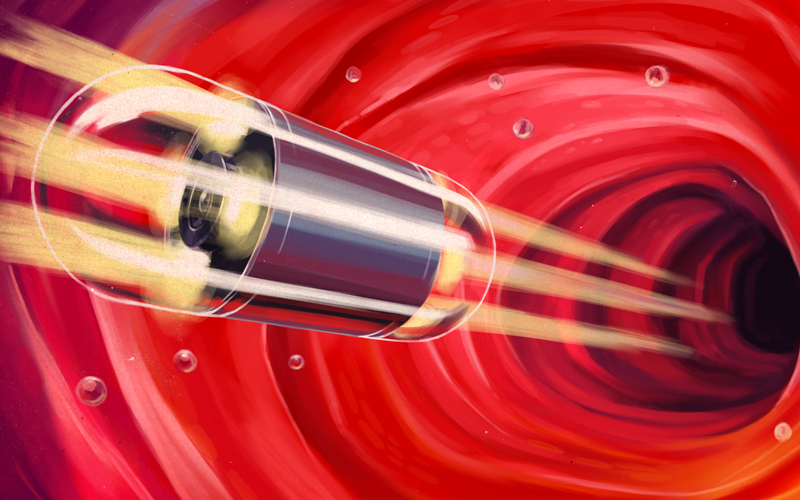
In the 1966 classic sci-fi movie Fantastic Voyage, a comatose scientist who holds vital secrets requires urgent brain surgery that is too dangerous to attempt using traditional methods. The solution? Take a research submersible, along with a crew of medical experts, miniaturise it and inject it into the body of the stricken man. It’s a brilliant solution to the need for a non-invasive procedure. Or at least it would be, given the crew has only 60 minutes to complete the mission before they and the sub revert to their normal size – not the best outcome for the patient.
Almost 60 years later, genuinely non-invasive techniques for diagnosing a range of conditions are routine.
History of diagnostics
However, the history of diagnostics reveals a long and often slow path to progress. Ancient civilisations relied on little more than simple observation, with pulse reading among the more sophisticated techniques. Little changed for hundreds of years until end of the Enlightenment, with the development of the stethoscope in 1816, which allowed physicians to listen to the heartbeat and the air moving in and out of the lungs. The next momentous step came in 1895 with the discovery of X-rays, allowing the imaging of the interior structure of the body, followed by the emergence and refinement of electrocardiography techniques in the late 19th and early 20th centuries. By this point, non-invasive diagnostics were making their mark.
Today, imaging is one of the key techniques: ultrasound, magnetic resonance imaging (MRI), computed tomography (CT) scan, and positron emission tomography (PET) scans all offer views of the body’s internal landscape and provide the opportunity to spot potential problems without the need for more invasive investigations. In the spirit of Fantastic Voyage, small devices that can travel through the body are also becoming a reality – such as colon capsule endoscopy.
Alongside the ability to detect abnormalities early and to monitor the development of disease and effectiveness of treatment, non-invasive diagnostic techniques tend to be safer and more comfortable for the patient and can usually be applied faster, often in a non-specialist setting. The key benefits of colon capsule endoscopy over a full-blown colonoscopy are speedy access, patient comfort, and the ease of application.
New research project
The colon capsule endoscopy is now the subject of a £3m NIHR research grant, signalling that the technology’s moment has arrived. The research project, called ColoCap, will be headed by York and Scarborough Teaching Hospitals NHS Foundation Trust. The trial will recruit patients from 30 sites across the UK and should report its first results in 2026.
While the pill-sized capsule takes advantage of some of the latest technology, the device itself is not that new, says Professor James Turvill, Consultant Gastroenterologist at York and Scarborough: “Capsule technology has been around for some time and a small bowel capsule has been used in clinical practice for many years. This is a colon capsule and is different because there are different technical demands in getting a capsule with a sufficient battery life through a clean bowel into the colon, and then capable of taking sufficient images through the colon to make a diagnosis.”
With the problem of the battery largely solved, deployment of the colon capsule endoscopy should have expanded. But the reality is not quite so straightforward. “Using a capsule within the small bowel is of great interest simply because there is no other great way of looking at the small bowel,” says Turvill. “But the reference standard for examining the large bowel is a colonoscopy. Over the last 20 years endoscopists have worked very hard to get very good at colonoscopy and there’s a lot of it going on in the UK.”
Non-invasive tests
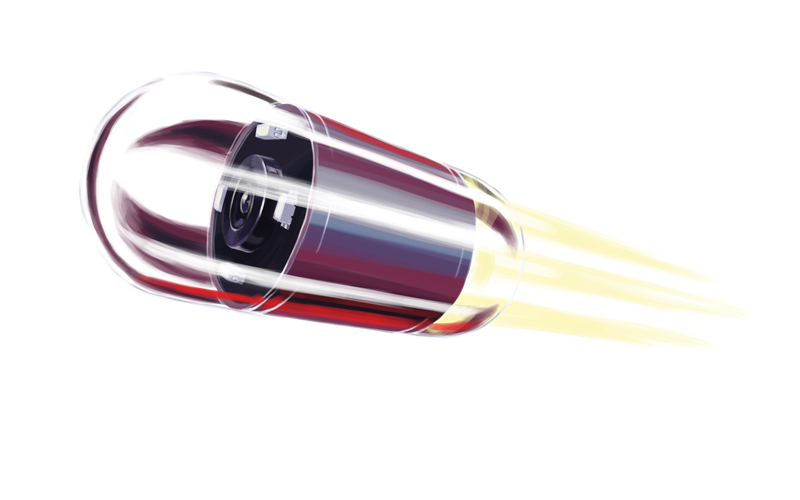
Non-invasive tests are an ever-developing field of diagnostics, driven by technological advances, such as the discovery of fresh biomarkers and the rapid growth of computational power. Among the key emerging techniques are:
- Liquid biopsies: less invasive than tissue biopsies, these involve taking bodily fluid samples, such as urine or blood, which can contain cancer biomarkers such as circulating tumour DNA (ctDNA) and cell-free DNA (cfDNA).
- Saliva-based tests: similar to urine and blood, saliva can also carry various biomarkers, such as DNA, RNA and proteins, that could indicate the presence of cancers, infectious diseases, and conditions such as diabetes and dementia.
- AI-assisted imaging: while X-rays, MRI scans and CT scans remain the key techniques, AI algorithms are starting to enhance their ability to detect the signs of emerging disease with far greater accuracy and speed.
- Smartphones and wearable diagnostics: everyday devices are already getting in on the act by monitoring vital health signs, but the wider use of non-invasive sensors and cameras could widen the diagnostic application to a range of conditions.
Gene expression profiling: focused again on bodily fluids, such as blood, this technique analyses gene activity in a bid to not only detect diseases early but also suggest potential therapies tailored to the individual.
A more passive technique
Colonoscopy not only diagnoses but can also treat. It involves inserting a long, thin, flexible tube-like instrument into a patient’s colon via the anus. The scope is equipped with a light and camera, allowing the operator to inspect the bowel, and a loop-like device for removing polyps or taking biopsies. It is a key procedure for diagnosing bowel cancer and removing pre-malignant growths. However, it can be uncomfortable, unpleasant and embarrassing for patients, who may need a sedative during the 30-minute procedure. Only highly trained hospital-based professionals can deliver a colonoscopy.
In contrast, the patient swallows the capsule, which then travels through the large bowel, taking images as it goes and relaying them to an external recorder. Though this is often preferable for the patient, the colon capsule endoscopy is a more passive technique, restricted to the role of monitoring and diagnosing, and in many ways cannot compete with a colonoscopy. All the same, the capsule’s moment arrived once the UK went into lockdown in March 2020. Before COVID, only a handful of capsules had been used in England, though they had been more common in Scotland, largely because of the unique geography of the Highlands and beyond. “It’s difficult for patients to drive four hours in the car, have a colonoscopy, and then drive all the way home,” says Turvill. “Instead, a capsule could be sent out to an individual in the Outer Hebrides, for example, and they could have a diagnostic test.”
The mobility of the capsule was its crucial advantage once COVID took a grip. “Suddenly it was not safe to perform a colonoscopy,” says Turvill. “We couldn’t bring people into hospital. Overnight the ability to diagnose bowel disease fell through the floor.”
“Training is a matter of weeks, so you can increase your workforce for diagnostic bowel disease rapidly”
NHS England began casting around for suitable alternatives. The capsule was the obvious choice, though it remained untested as a potential replacement for colonoscopy on any sort of scale. Could it fill the gap? A pilot scheme was launched across 50 NHS trusts in England to deploy the capsule and evaluate its use, with York and Scarborough Teaching Hospitals NHS Foundation Trust at the helm. “That ran throughout COVID and we are just finishing that pilot,” says Turvill. “Because of that, NIHR became interested in the capsule and asked for formal bids to undertake a full study.”
The study is interested in evaluating what the technology means for the patient and monitoring how the data the capsules provide is processed. “Training to read the images is a matter of weeks compared to years for colonoscopy, so you can increase your workforce for diagnostic bowel disease capacity very rapidly,” says Turvill. “One of the big strands of this study is looking at how the capsule can provide new capacity for bowel diagnostics.”
As with colonoscopy, some preparation is required. This mostly involves a regimen of laxatives and a restricted diet a day or two before the procedure to ensure the bowel is as clean as possible, which allows the clearest possible view for the cameras. The transit time for the capsule is usually four to five hours, though depending on the circumstances it can take longer. The battery can last for up to 10 hours. Complications, such as the capsule becoming stuck, are rare and normally sort themselves out given time. After it has completed its task the capsule passes out of the patient into the sewer system where it biodegrades. “We think that the overall footprint might be a good deal better than colonoscopy, which uses large amounts of water and consumables,” says Turvill.
The capsule
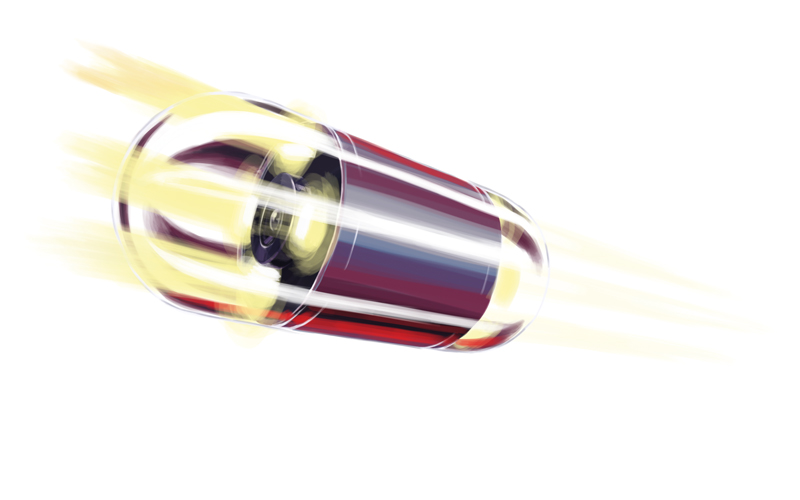
The colon capsule endoscopy is roughly the size and shape of a large tablet: just over three centimetres long and one centimetre wide. It is made of smooth plastic-like material, making it easy to swallow. At each end it has a light source that illuminates the lining of the colon and a tiny camera that can capture clear images. The cameras can take dozens of frames per second, potentially revealing a wealth of information. It can shut down whenever it stops moving, then power back up when it starts to move again. The images are relayed to an external data recorder, about the size of a large smartphone, which is attached to a belt worn by the patient. At the end of the procedure, the data from the recorder can be downloaded to a computer or to secure cloud storage, where a specialist can then look at the images.
Testing accuracy
During the pandemic, more than 5000 patients around the country received a colon capsule endoscopy – a sizeable sample by any standard – so what does the new trial hope to achieve that hasn’t already been done? “It reflects the due diligence that goes on within the NHS around research and the way it sees new technology,” says Turvill. “This is a paired study, so every patient will have both a capsule and a colonoscopy.”
“There’s interest in this idea of capsules becoming measures of physiology and pathology in a wider sense”
The patients will swallow the capsule in the morning, let it do its work and wait for it to pass, then come back later in the day for the colonoscopy. Researchers will then compare the findings. The aim is to test, to a high degree of confidence, the accuracy of the colon capsule endoscopy against colonoscopy. In effect, the pilot is a more evaluative process that has been carefully designed, whereas the pandemic response was more of a fire-fighting approach that was not intended to supply the robust data that the NHS would want in normal situations.
“The other issue is that there are a number of settings in which the capsule could be useful and this study is trying to identify those,” says Turvill. “For example, in surveillance rather than in just symptomatic patients, and in trying to diagnose colitis, which is an inflammatory condition, as well as cancer and polyps, which are pre-malignant lesions. We hope to have a full understanding of the capsule’s accuracy and where it might sit within a healthcare economy.”
Scientific innovations predicted by films
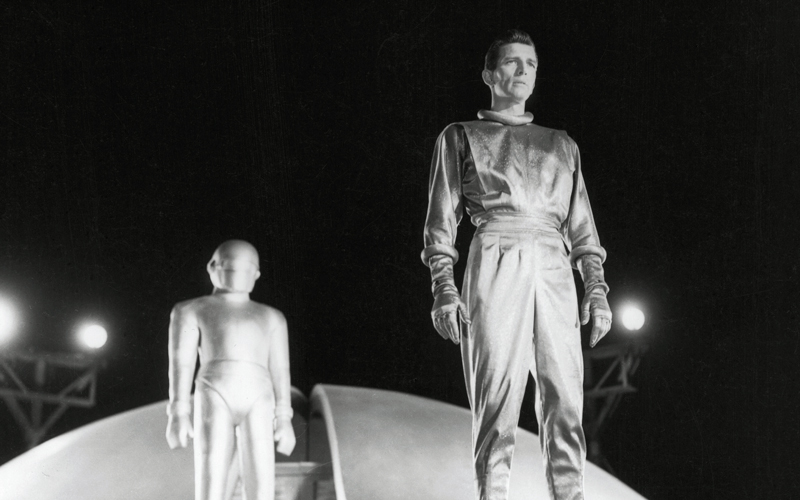
The Day the Earth Stood Still (1951)
Artificial intelligence
The Day the Earth Stood Still features a robot named Gort – the first true AI in film history. Though it does not speak, it is made clear that it is an artificial being capable of executing complex commands and adapting to real-world situations.
Dick Tracy (1990)

Smart watches
The 1990 film comedy, starring Warren Beatty, featured a two-way radio watch that the detective could use to communicate with police headquarters. While the film was decades ahead of its time – the first Apple smart watch was released in 2015 – Dick Tracey’s watch made its debut in the original comic in 1946.
Darkman (1990)
3D-printed human organs
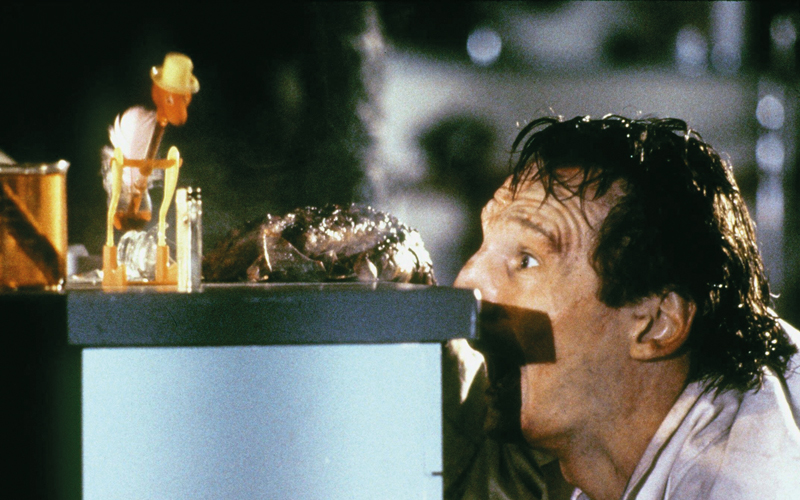
Sam Raimi’s sci-fi crime melodrama Darkman is a film ahead of its time. The main character, Dr Peyton Westlake, discovers a way to produce synthetic skin, allowing him to reconstruct his face after severe facial burns. Just 30 years later, 3D printing of organs is a real possibility.
The limitations
Part of the key to understanding the capsule’s role is being aware of its limits. The key limitation is its inability to deliver therapy: if it does detect disease, a colonoscopy is still needed to obtain a biopsy or to remove a polyp. This suggests that the best solution is simply more colonoscopy services. But, as we live in a resource-constrained environment, the capsule may still claim a clear role. “It will perhaps become a useful way to reassure a cohort of patients that all is well, and we then focus the colonoscopy on those who most need it,” says Turvill.
He also believes the non-invasive capsule intuitively feels a more sensible approach. “It’s not perfect,” he says, “but the NHS has become a world leader in this diagnostic, and if that stimulates enough research interest, perhaps we will get better kit in future.”
What’s potentially coming over the horizon is a variety of more advanced and capable devices. “There is a whole range of other capsules coming along,” says Turvill. “Drivable capsules that can interrogate lesions better, take a biopsy or deliver therapy. Devices that can sample volatile or organic compounds in the gut, or that can measure the temperature. Capsules that take X-rays and so effectively perform an internal CT scan of the bowel. There’s a burgeoning interest in this idea of capsules becoming measures of physiology and pathology in a wider sense.”
Image Credit | The Red Dress | Alamy




